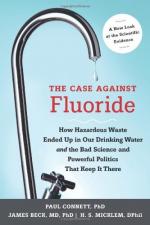|
This section contains 4,278 words (approx. 15 pages at 300 words per page) |

|
SURROUNDED BY THE farmland of southeastern Washington State, the Hanford Nuclear Reservation stands as an example of the problems which radioactive waste can cause. From 1943 to 1989, the U.S. government used the Hanford Reservation to manufacture plutonium for the production of nuclear bombs. Hanford's operations relied upon the use of radioactive materials, and as a result the facility generated millions of gallons of radioactive waste. As early as the 1950s, at least some of Hanford's radioactive waste was released directly into the Columbia River, which runs alongside of the facility. Another 54 million gallons of highly radioactive waste was poured into 177 underground tanks buried onsite. Most of the tanks were single-shelled—only one layer of metal lay between the waste and the ground. Today, sixty-seven of these tanks are leaking. More than one million gallons of radioactive waste have seeped into the ground, and...
|
This section contains 4,278 words (approx. 15 pages at 300 words per page) |

|




